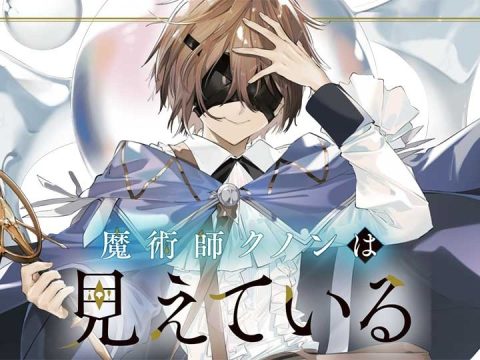 The best episode of Dance in the Vampire Bund is the first episode, a tense affair on a mythbusting variety show on the topic of vampires that culminates in a bloody revelation that yes, vampires do exist, and they want to set up camp in the nearby landfill. It’s a brilliant episode—the tension slowly ratchets up as the variety show progresses, and the bloody ending hints at the potential for future Bulgakovian Hellish mayhem. The nosedive the series takes after this is short, inglorious, and painful.
The best episode of Dance in the Vampire Bund is the first episode, a tense affair on a mythbusting variety show on the topic of vampires that culminates in a bloody revelation that yes, vampires do exist, and they want to set up camp in the nearby landfill. It’s a brilliant episode—the tension slowly ratchets up as the variety show progresses, and the bloody ending hints at the potential for future Bulgakovian Hellish mayhem. The nosedive the series takes after this is short, inglorious, and painful.
Dance in the Vampire Bund‘s story splits itself between a pseudo-political thriller surrounding the establishment of the vampire bund and a halfhearted romance between Mina Tepes, the Romanian queen of the vampires, and Akira Regendorf, her most intimate werewolf bodyguard, currently suffering from amnesia. The anime focuses primarily on Akira as he comes to terms first with who he is and later with the secrets he knows. In between bouts of psychological paranoia he teams with the rest of Mina’s vampiric and lycanthropic bodyguards to protect her from threats both human and vampire as she establishes her vampire bund; the results of these conflicts often end in violence.
The relationship between Mina and Akira is entirely tensionless and mostly serves either as political leverage, as their fierce devotion is easily exploited, or as an excuse to eroticize Mina. Which is probably the one, single thing you know about Dance in the Vampire Bund: Mina is a nubile young maiden prone to wearing extraordinarily revealing clothing. There’s nothing inherently wrong with an eroticized vampire—after all, the literary function of vampires is to serve as a symbol of our darker sexual urges, so a supple strumpet such as Mina is hardly out of place next to everyone’s favorite lesbian vampire Carmilla, or Count Dracula’s homosexual passes at Jonathan Harker—but, given the trends toward Lolita fetishism in anime as of late, claiming a literary defense is feeble at best. Counting double is that Mina gets the bulk of the obvious eroticism and the other vampires—especially the men, who are either plain or obviously hideous—get little or none.
The plot of Vampire Bund is narrative mush: things happen inexplicably, and there’s no sense of progression or of events deriving from character actions. It’s considerably difficult to track the different characters and where they fit on the relationship polychoron, and the series is paced at a speed that gives you no time to get a sense of any of the characters. The political aspect—the business of setting up the vampire bund and securing government recognition—is interesting and has moments of lucidity, but it ends halfway through the series.
The single redeeming aspect of Vampire Bund‘s storytelling is director Akiyuki Shinbo’s talent for visual design. The dark tones and angular lighting make everything suitably Gothic, which makes this series one of the few recent takes on vampires that hasn’t been fully stripped of its dark origins. Shinbo is also excellent at depicting the psychological suffering of the characters; if there’s anything his more serious works have taught me, it’s that the man loves his high-tension lighting and Dutch angles. Were Vampire Bund a more straightforward work of psychological horror—as it was in the first episode—it would undoubtedly have been a better show for it; as it is, the characters are neither relatable nor despicable enough to make the psychological aspect interesting.
There’s not a lot to recommend this series on unless you’re desperate for a vampire anime that properly captures the dark, Gothic mood of traditional vampire novels. With nothing to compel the viewer to move from episode to episode, the series is a slog; even the much-ballyhooed Mina is entirely too tame to serve as a compelling (if licentious) reason to plow through it. I’ve seen SoulTaker, another Shinbo work of ridiculous visual design, hyperactive camerawork, and nonsensical plot, and yet that was somehow more intelligible and enjoyable than the mess that is Dance in the Vampire Bund.
Studio/Company: FUNimation
Available: Now







